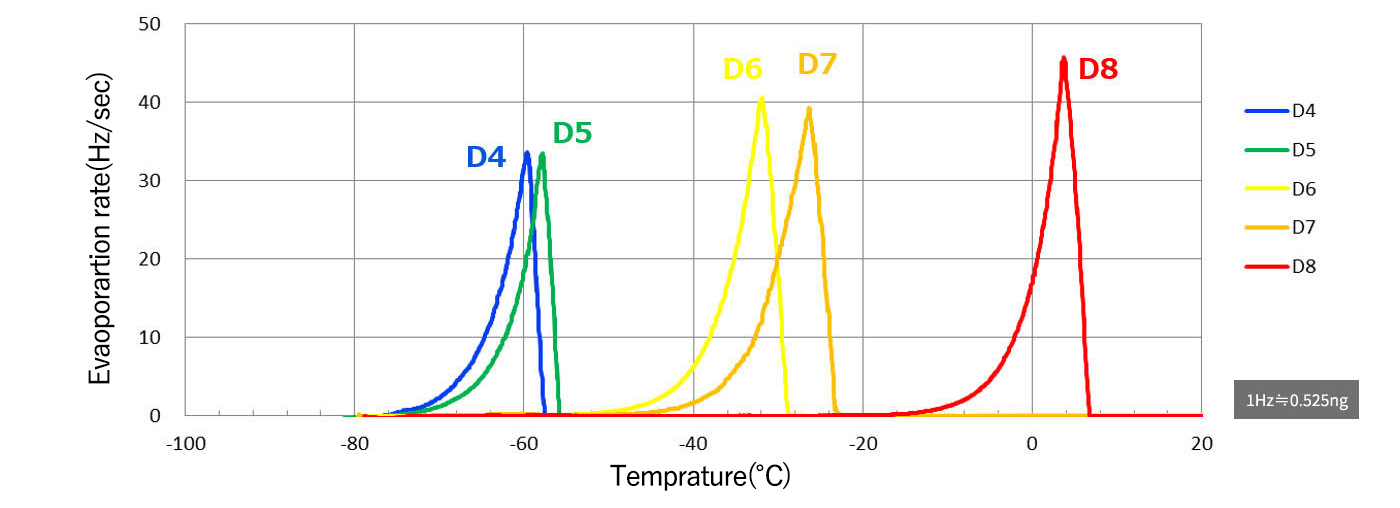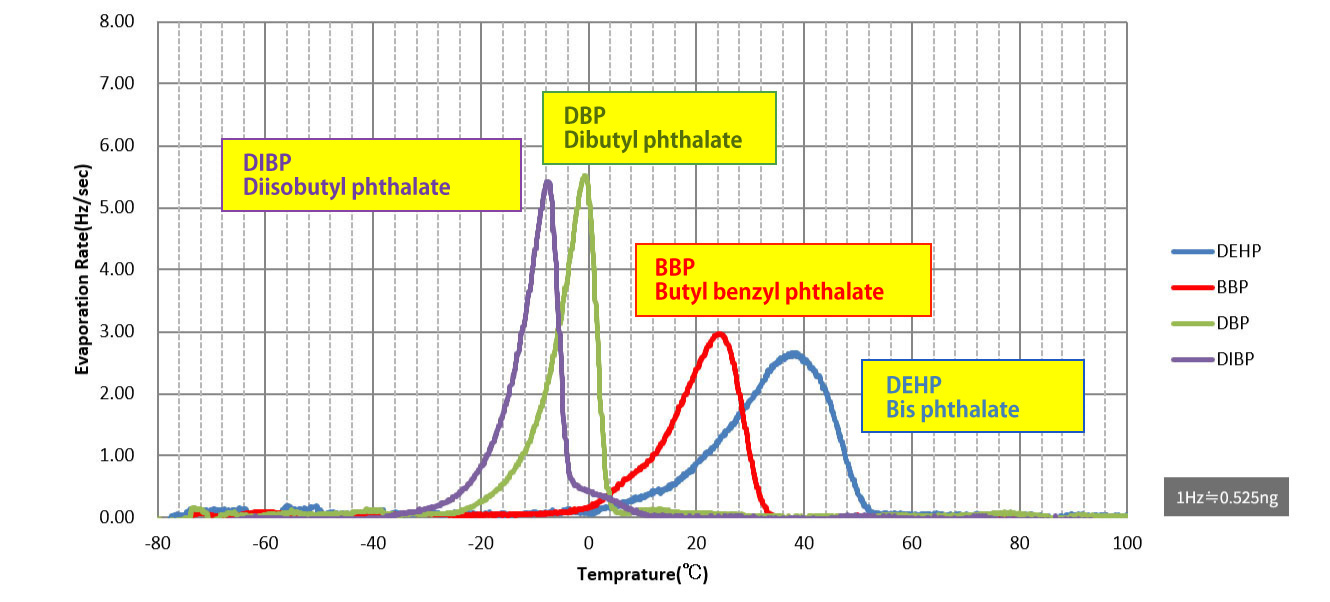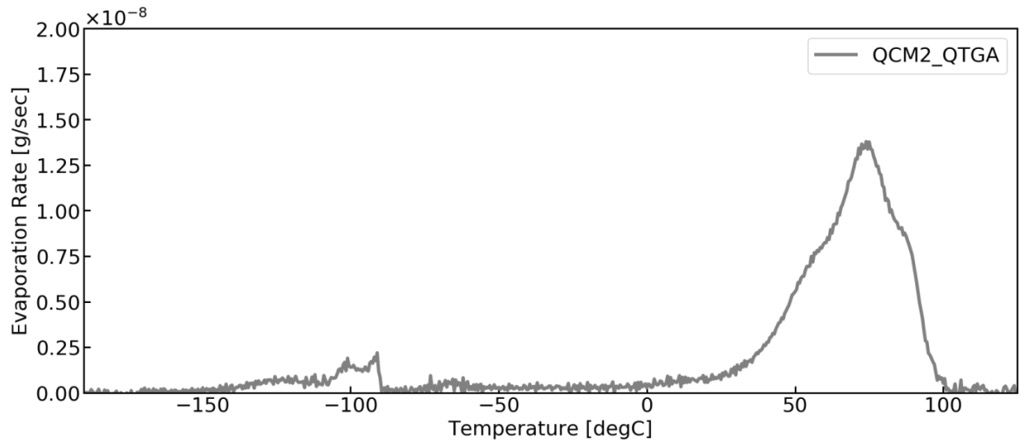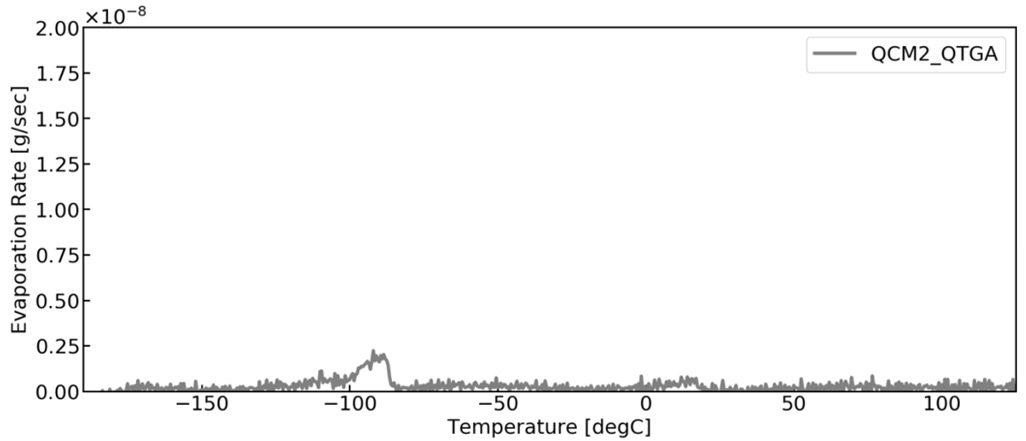Measurement examples
Measurement of low-molecular cyclic siloxane, which is found in many silicone resins and adhesives and has a major impact on electronic equipment
QTGA properties of low-molecular cyclic siloxane by TQCM mounted compact vacuum-chamber system

Comparing to small cyclic siloxane D4 (4-body) to D8 (8-body), cyclic siloxane with a larger molecular weight desorbes at a higher temperature.
The siloxane type can be identified from the desorption temperature, and the content can be evaluated from the release rate.
Measurement of phthalate esters, which are subject to RoHS2
Cyclic phthalate QTGA Characteristics by TQCM mounted small vacuum chamber system

| DIBP | DBP | BBP | DEHP | |
|---|---|---|---|---|
| Molecular weight | 278.35 | 278.35 | 312.37 | 390.56 |
| Boiling point(℃) | 296.5 | 340 | 370 | 386 |
| Molecular weight | Boiling point(℃) | |
|---|---|---|
| DIBP | 278.35 | 296.5 |
| DBP | 278.35 | 340 |
| BBP | 312.37 | 370 |
| DEHP | 390.56 | 386 |
Phthalate esters also have higher molecular weight and desorb at higher temperatures with higher boiling points.
The type of phthalic acid was identified from the desorption temperature, and the content could be evaluated from the release rate.
Measurement of curing temperature and residual outgas of conductive adhesive
Confirmation of desorption gas

Harden at 200℃ for 60 min. QTGA characteristics

Hardening at 300℃ for 60 min. QTGA characteristics
Data: Provided by JAXA
Residual outgas is removed by raising the hardening at 200℃ for 60 minutes to 300℃
Effective for verification of hardening conditions
